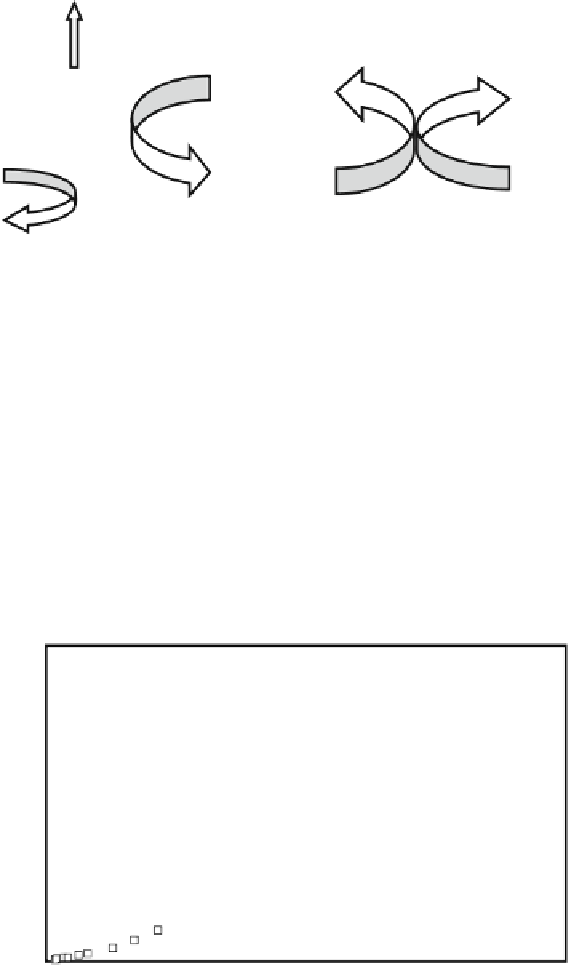Environmental Engineering Reference
In-Depth Information
Fe(II) or Mn(II)
Fe(III) or
Mn(IV)
mineral
Electron shuttle
(oxidized)
Fe(II) or Mn(II)
Cell
Electron shuttle
(reduced)
Substrate
Fe(III) or
Mn(IV)
mineral
CO
2
Fig. 1.11
Fe(III) and Mn(IV) as competing electron acceptors in U(VI) reduction [156, 65, 157]
(4-5 months) as long as sulfate-reducing conditions are satisfied in the reactor. The
dominant mechanism of U removal in biofilm reactors is thought to be enzymatic
reduction.
Stimulated Indigenous Biofilms on Natural Sediments
Recently, our research has focused on using biofilms of naturally growing facultative
bacteria grown on sediments from uranium-contaminated sites in the Hanford 300
Area to evaluate U(VI) immobilization in the presence of naturally occurring redox-
sensitive minerals.
180
160
140
U(VI) delivered to the column reactor
120
100
80
60
40
20
0
0
5
10
15
20
25
30
35
40
45
Time (day)
Fig. 1.12
Total amount of uranium accumulated in lactate-stimulated indigenous biofilms on sed-
iments from the Hanford 300 Area. The reactor was fed with 126
M U(VI) at a flow rate of 125
mL/day. The
continuous line
shows the cumulative amount of uranium delivered to the reactor (the
maximum possible uranium accumulation)
μ





























